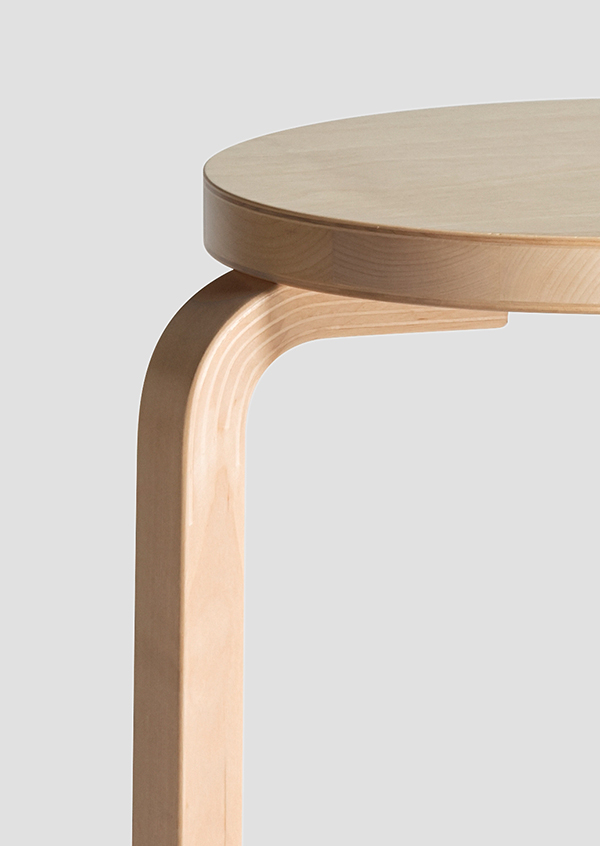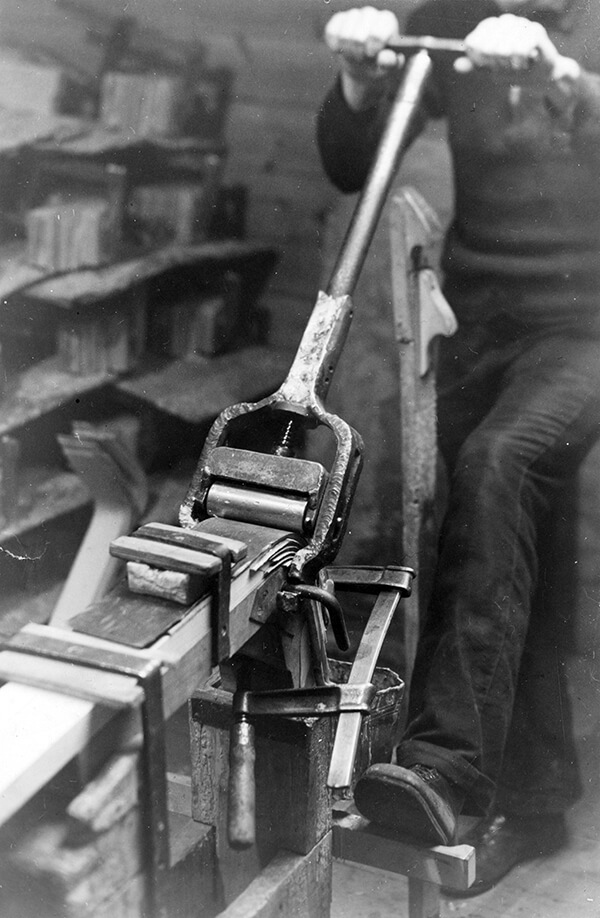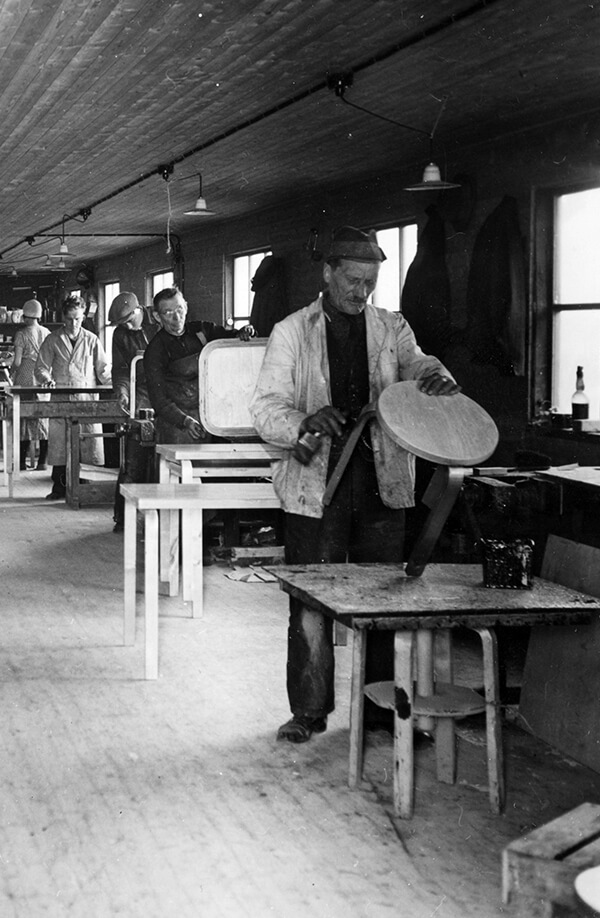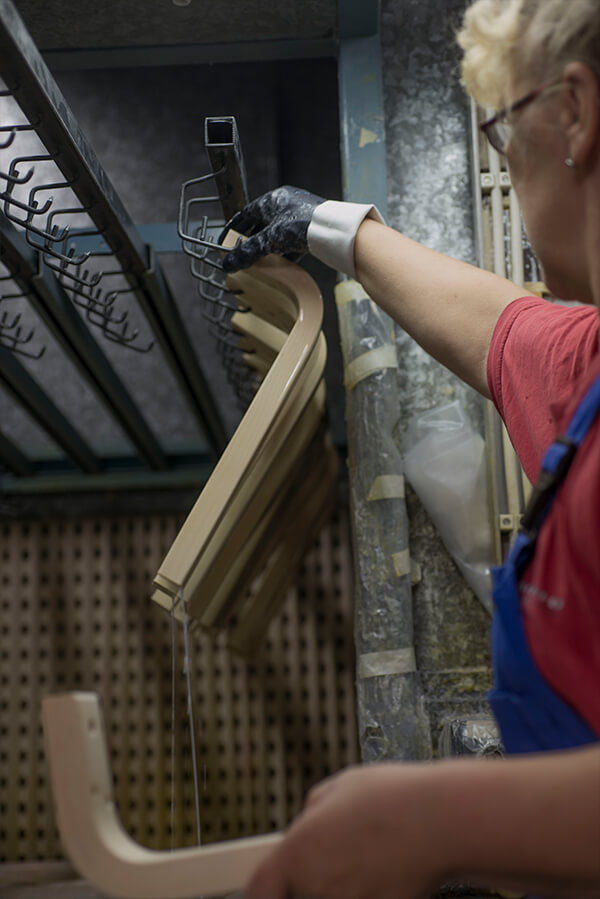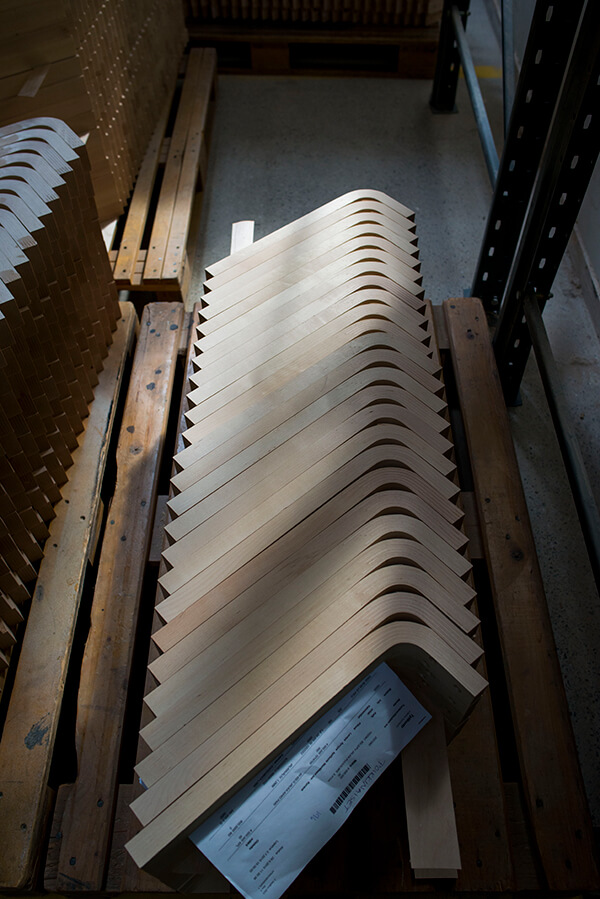Design icon: Artek 60 Stool
It might look deceptively simple in its design, but the Artek 60 Stool is a perfectly crafted piece of furniture. The most elemental of furniture pieces – it can be used as a place to sit, a side table or even a display surface.
It’s this multifunctional simplicity, mixed with durability and enduring style that has made this design one of the most popular and cherished pieces of furniture in history.
Designed by Alvar Aalto in 1933, Stool 60 is crafted out of solid birch. Mounted directly to the underside of the seat, three L-shaped legs allow the stool to be stacked into a spiralling tower when not in use – making it a design that works just as well in large public buildings as it does in the home. It was this pioneering L-leg that initially bought the Stool 60, and its manufacturer Artek fame – mass-producible, locally sourced and beautiful, we take a look at why this was such an important invention.
Designed & produced in Finland
Aalto often followed modernist design principles, but he was also a rebel. Rather than simply use the glass and steel that so many other European modernists were using at the time, he was determined to develop his designs with materials that were local to his native Finland. This led him towards the material Artek has become synonymous with - Finnish birch.
One of the most plentiful resources in Finland, birch trees grow tall very quickly in order to complete for sunlight in their mixed forest habitat. They then spend the rest of their lives maturing to create a very close-grained and strong wood. Before being harvested for use in furniture production, every tree is allowed to grow for between 50 and 80 years. All wood that Artek uses has been FSC certified.
In the 1920s, when Artek was just a seed of an idea in the designer’s mind - Aalto began experiments into the mass-production of wooden furniture with furniture maker Otto Korhonen. Korhonen had collaborated with Aalto on an earlier building project and together the two men developed the notorious L-leg – something Aalto described as the ‘little sister of the architectural column'. This simple but perfectly engineered structure went on to become the heart of the Artek collection.
To turn raw birch into the L-leg, the timber is first soaked to soften the wood. Multiple cuts are then made into the end of each piece of timber, in the direction of the wood fibres. The deeper the cut, the bigger the bend. Pieces of wood veneer are then glued and inserted into these slits before being heated and bent into shape. This process stays pretty much unchanged from the one that Alvar Aalto and Otto Korhonen patented in 1933.
A worldwide design icon
It is said that Aalto tested out the sturdiness of his design by repeatedly throwing the prototype on the floor of the Korhonen furniture factory. He shouted, “We’ll make thousands of these one day!” – and how right he was.
The Stool 60 was officially presented to the public for the first time in November of 1933 at an exhibition by Fortnum & Mason in London. Britain fell in with love with the simple, practical design and over 2000 stool were exported to the UK between 1934-35. Interest was a little bit slower in Aalto’s native Finland, but it wasn’t long before the design began popping up in homes and public buildings across the globe.
In 1958, the stool was added to MoMA’s permanent collection, joining designs such as the Eames Lounge Chair and the Knoll Tulip Chair – the true mark of a design icon. Today, several million Stool 60s have been sold worldwide – making it one of the most popular products in design history.
Get your own little piece of design history and shop the Artek 60 Stool at Nest today.



